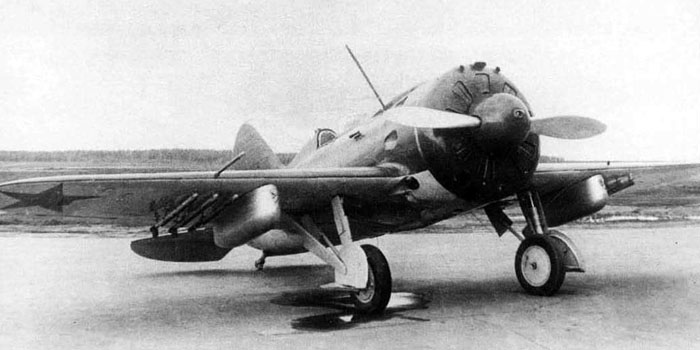
The final version of the I-16 was a ground attack plane. It had much in common with the rockets-armed Type 24R but it lost the wings ShKAS in favor of one new Berezin synchronized 12.7 mm UBS in the lower part of the fuselage.
This change required a cascade of other changes: to begin with, the relocation of the oil cooler on the right side of 40°, between the cylinders; as a consequence, the inlet and outlet were moved on the right, preventing to use the slots under the nose for a retractable ski gear, and requiring the omission of the RI manual engine starting system and the relocation of the exhaust pipe of the lower cylinder.
To make room for the UBS, the wheel bays had to be moved outside of 20 mm each, shortening the landing gear legs and their stroke; as a further consequence of this, the AV-1 propeller had to be shortened from 2.8 m to 2.7 m, and its blades widened and rounded on their tips to save its thrust.
As the Type 24R, it was moved by an M-63 engine, had standard provision for auxiliary tanks and 6 rocket rails, the landing flares under the right wing that required metal protections on the wings, and an optional mast on the right side of the nose for the RSI-3 radio.
Known serials start with 292111 (plane 1 of series 1) of the summer of 1940 and end with 2921899 of 1941, suggesting a production of 800 planes in Factory 21.
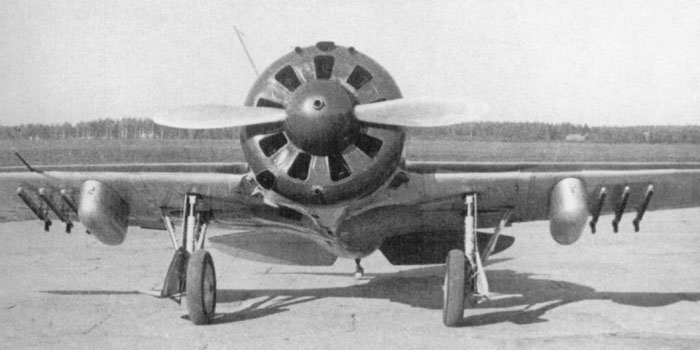
Left: photos of the prototype of Type 29 in 1940.
The front photo shows clearly the visual characteristics of the Type 29:
- shorter and wider blades (2.7 m diameter instead of 2.8);
- intake for the oil cooler moved on the right of 40°;
- UBS machine gun nozzle protruding and its fairing between the landing gear bays;
- lack of wing-mounted ShKAS;
- standard provision for rocket rails and droppable tanks;
- protection plates on the wing leading edges;
- oblique radio aerial mast (optional);
- slightly shorter landing gear legs.
Images from Polikarpov I-16 fighter of Gordon and Dexter
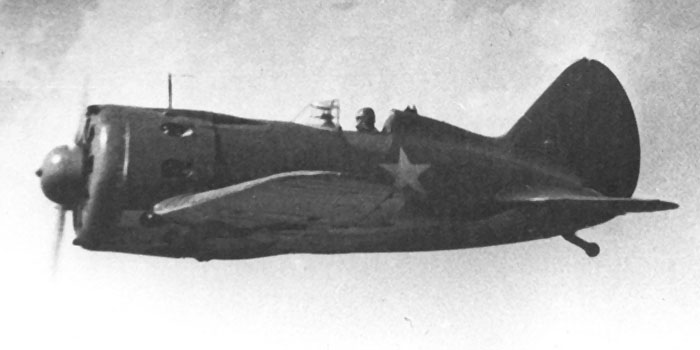
The photo in flight shows how the fairing for the UBS changed the profile under the fuselage.
The Type 29 was the heaviest version of I-16 with a full weight of 2115 kg (including radio, rockets and drop tanks), against 1882 kg of a standard Type 24.
On these conditions, speed at 4150 m was only 429 km/h (against 489 km/h of the type 24) and time to 5000 m was 7.25 min compared to 5.2 min of Type 24).
In clean configuration, without radio, drop tanks (and probably rocket rails), the speed was of 470 km/h.
Not all the Type 29s were built with plates for tanks, rockets and torches
570 Type 29 were built in Zavod 21and 153 in the second half of 1940, and further 80 in 1941.
Left: image of Type 29 inflight. The radio mast and plates for auxiliary tanks are recognizable. The plane hadn't rocket rails, but it seems that has the relative metal plates because of the flatness of the relative area compared to the area under the wingtip where ribs look visible. some braces of the red star under the wings seem visible close to the wingtip, this outer position was indicative of the presence of extractable torches under the right wing.
Image from the web
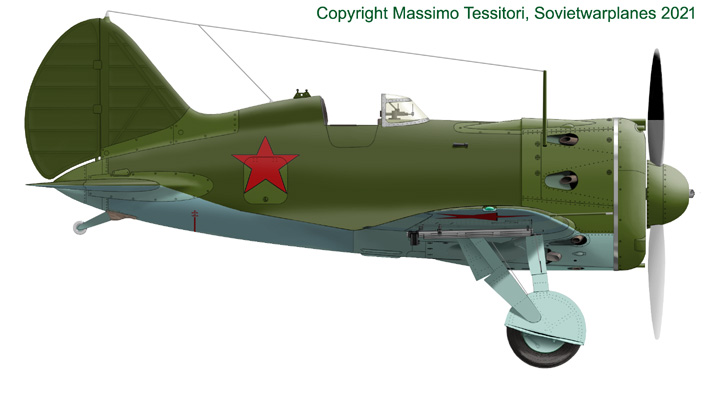
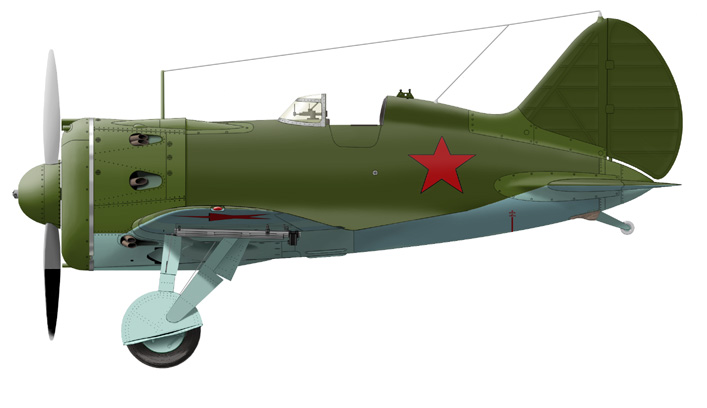
Profile views of typical Type 29, early version.
The visual characteristics, when compared to previous Type 24, were:
- new Berezin UBS 12,7 mm machine gun in the lower part of the nose, in central position;
- the ShKAS on the wings were suppressed, while the synchronized ones on the nose were preserved;
- the oil cooler of the M-63 engine was relocated on the right side, behind the space between cylinders 4 and 5; on the most part of type 29s starting from the prototype, it had a protruding trapezoidal intake on the low-right front, leading to a duct passing between cylinders 4 and 5, and a tubular outlet under the nose;
- to make space for the UBS between the landing gear bays, each bay was moved 20 mm outside;
- the main legs of the landing gear were shortened by 38 mm and their stroke reduced;
- to preserve the ground clearance, a shorter AV-1 prop diameter was adopted, from 2,8 m to 2,7 m; the blades were wider and more rounded;
- 6 rocket rails for RS-82 rockets were installed, and metal plates on the wings to protect them from the fire;
- two extractable flares were installed under the right wing outer console; metal plates were installed to protect the skinning (as on late Type 24 and 28).
- nearly all the planes were equipped with underwing tanks predisposition (and the access plates over the wings) as standard; two alternative types of tanks did exist, a flat-top one, most widely utilized, and a drop-shaped one, rare;
- optional RSI-3 radio equipment with mast on the right side of the nose and wire aerials; the mast protruded from an hole in the right cowling side, visible even when the mast was not installed;
- optional (forthemost installed) support for camera gun behind the headrest (often seen on previous versions too);
- a small circular plug (for the battery?) on the left side of the fuselage, close to the door; this seems common to late Type 24 and perhaps late 28.
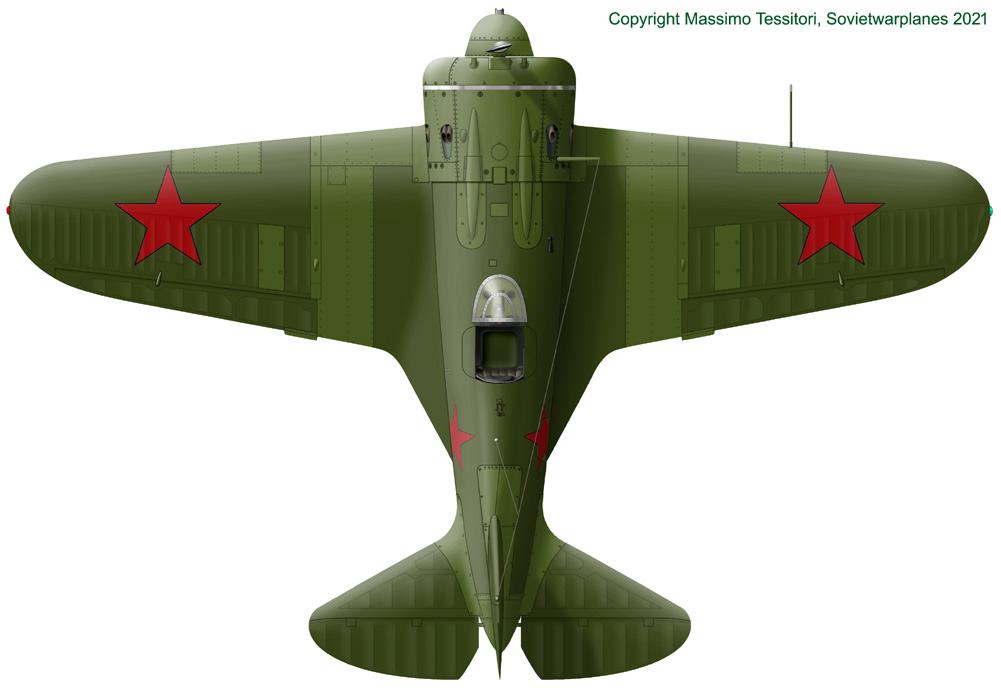
Above: top view of Type 29. One can note some characteristics of this version:
- radio mast and wires (optional);
- the lack of ShKAS on the wings and their ports;
- the fairings of the ShKAS over the nose had one more separate panel;
- the loading hatch of the UBS over the nose resembles the one for ShVAK in type 17-27-28;
- the access hatches for the auxiliary tanks system, nearly standard;
- a small circular plug (for the battery?) on the left side of the fuselage, close to the door;
- the metal reinforced skinning on the wings required by the installation of rocket rails.
Below: bottom view of typical early production Type 29. One can see:
- the UBS and its fairing;
- the deletion of the ShKAS on the wings, of their waste shells expulsion slots, and of their ammo hatches behind the engine cowling;
- the wheel bays moved outside of 20 mm each, with each landing gear shortened, preserving the hinges positions;
- the rocket rails under both wings and the flares under the right one, and the metallic skinning;
- the plates for the droppable tanks;
- two small panels behind the landing gear bays;
- the conformation of the lower part of the cowling, with the oil cooler inlet and outlet on the right side;
- one exhaust pipe moved from the vent close to the right wing to a smaller vent in nearly central position;
- one small protruding drop-shaped cover under the cooler on the right side;
- two strangely shaped slots for the outlet of cooling air from the engine, not usable for any retractable ski gear.
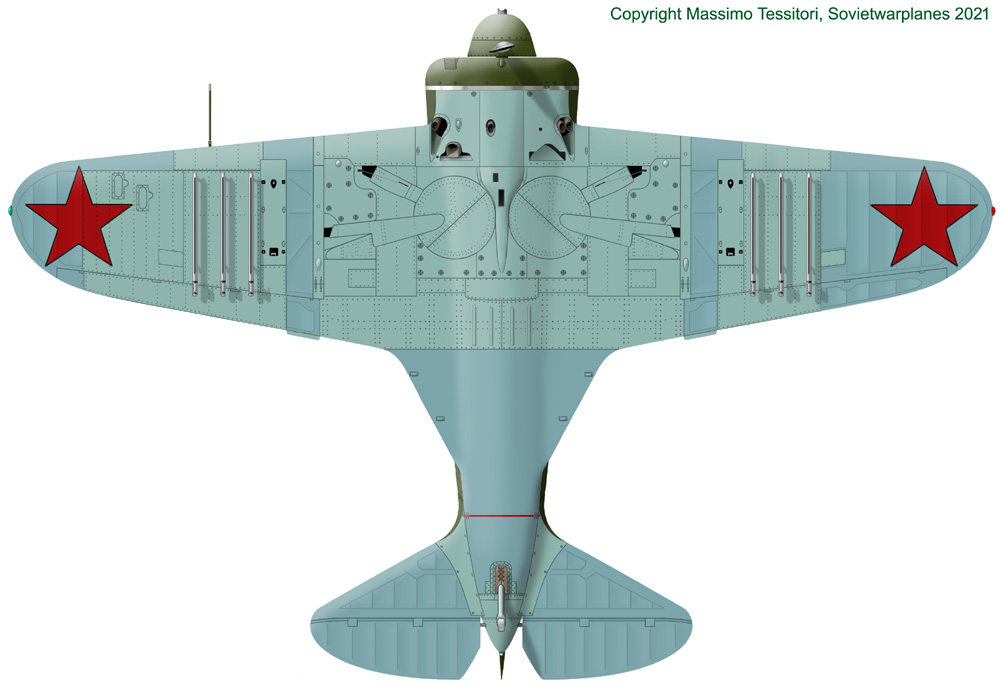
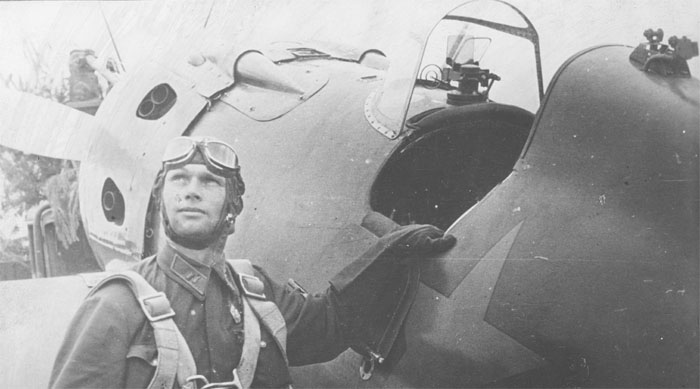
Close-up of the Type 29 of Maj. P.M. Petrov, commander of the 254 IAP.
The image shows interesting details:
- the gunsight PBP-1M; the vertical glass in front position was a light filter, optional even on earlier versions of this gunsight;
- the support of the camera gun on the back;
- a round, perhaps a plug for the battery, present only on the left side of Type 29s and late Type 24 just under the edge of the open door;
- a sort of deflector plate inside the upper vent for exhaust pipes; this should be an optional plug-in closure against snow and rain for the openings;
- the openable part of the machine gun blisters, characteristic of this type only;
- the loading hatch for the UBS machine gun over the nose, lying in a cut on the rear edge of the cowling;
- a piece of tissue covering the door hinges.
Images from
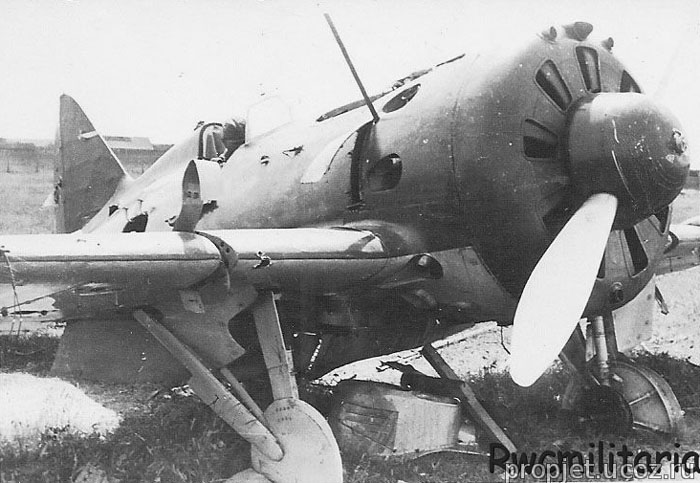
Type 29 was present in big numbers at the war outbreak. Here is a wrecked one captured by Germans.
Many details, as the outlet of the oil cooler (rounded on its front and flat on its rear side), the drop-shaped fairing in front of it, the hole at the base of the radio mast, the plates for auxiliary tanks etc. are recognizable.
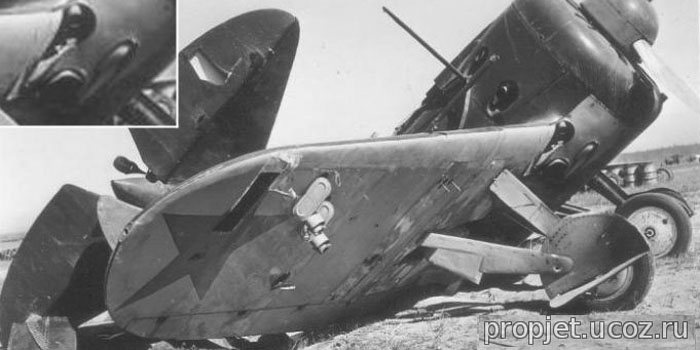
Another photo of a wreck showing some details of the extracted flares under the right wing, and of the plates for the drop tanks.
It seems that this plane hadn't the predisposition for the rocket rails and the relative plates.
The main gear leg cover is slightly curved on its back side, as on late type 24 but slightly shorter.
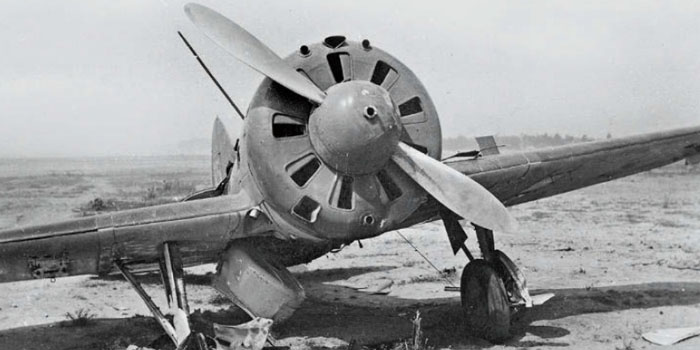
Left:
Note the front shape of the intake of the oil cooler, trapezoidal with bent inside sides.
Some details of the plate for droppable tanks are visible too. The plane doesn't seem predisposed for rocket rails.
Right:
Type 29 had the vent at 1 o'clock reduced to cover the speed regulator of the M-63 engine, just as late Type 24.
Note also the void at the base of the shutter of the vent at 12 o'clock to avoid interference with the regulator.
Images from Scalemodels.ru
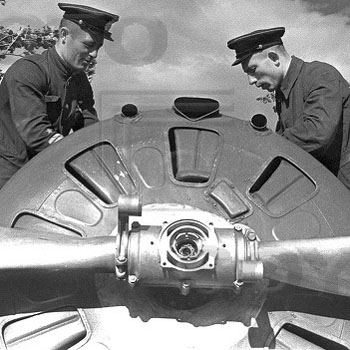
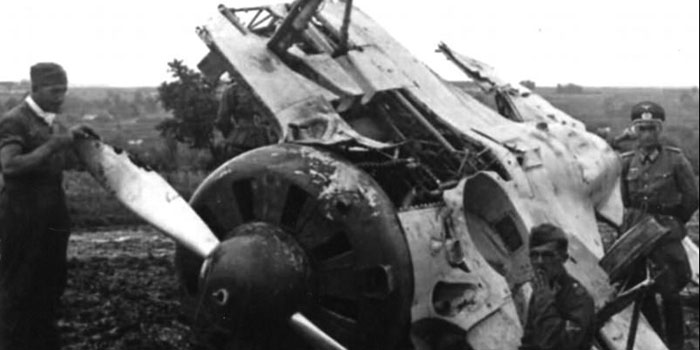
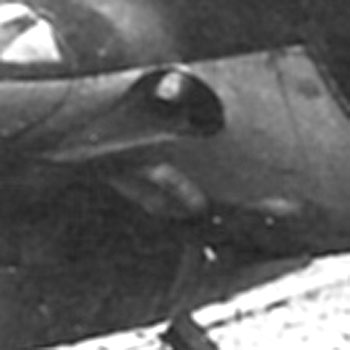
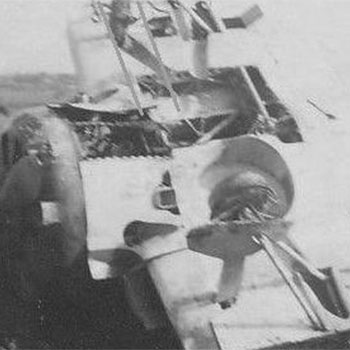
Right: the shape of the outlet, curved forward and flat backwards, is visible.
On the second photo, the outlet looks squared on its front, but this is probably due to a shadow inside or to a damage, it should be rounded on the front. Note the complex shape of the slot around it.
The moving aside of the oil cooler prevented to use the slots for a retractable ski gear as on previous types.
Images from Scalemodels.ru
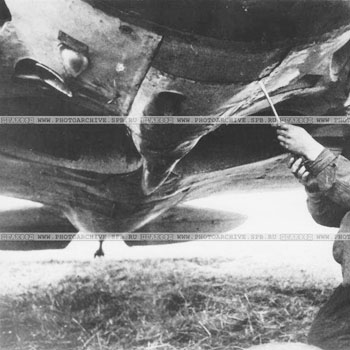
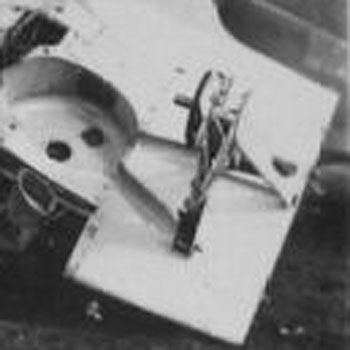
Left: many details under the nose.
Strangely, the central panel under the cowling is splitted in two parts; usually it appears in one piece.
Right: the rear shape of the leg's bay is visible here; it was curved, more or less as on late Type 24, to lodge the anti-torque scissors installed behind the main legs.
Images from Scalemodels.ru
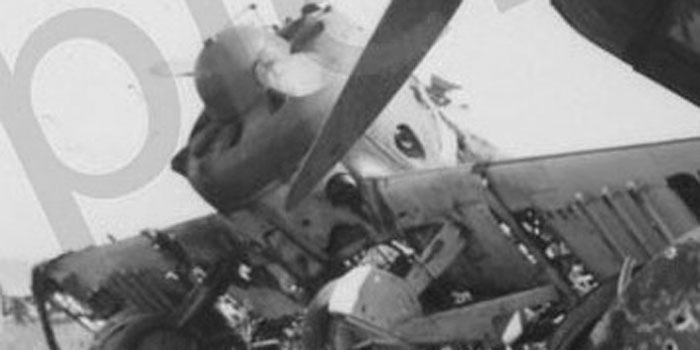
This photo of a wreck shows well the details under the nose on the left side. The rocket rails and the protectibe plates are visible too.
Image from the web
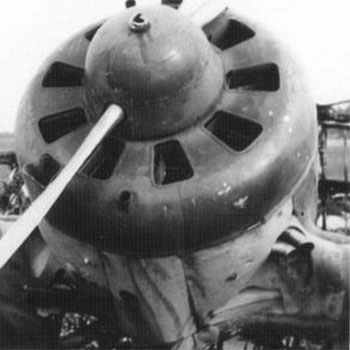
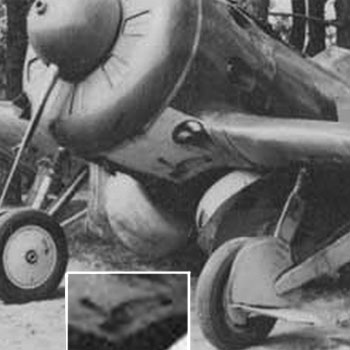
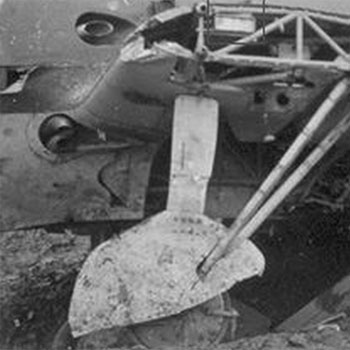
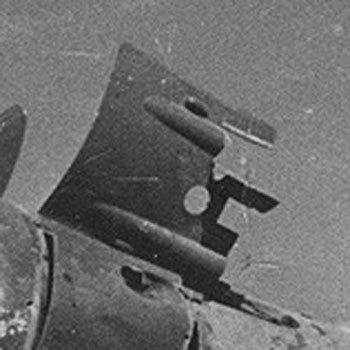
Above right and left:
details of the left part under the nose.
Below left:
an excellent view of the shape of the slot under the left side of the cowling.
Below right: the photo shows the upper panel of the engine cowling. One can see clearly:
- the circular hole for the oil (common to previous version)
- the auxiliary access on the ShKAS blisters, typical of type 29 only;
- the square cut for the loading of the UBS, similar to that of the ShVAK of Type 17-27-28.
Photos from the web
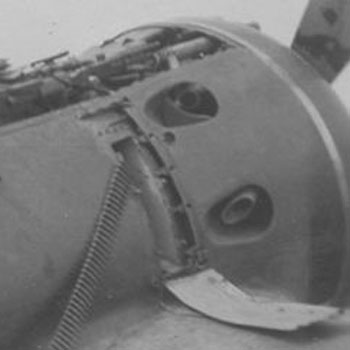
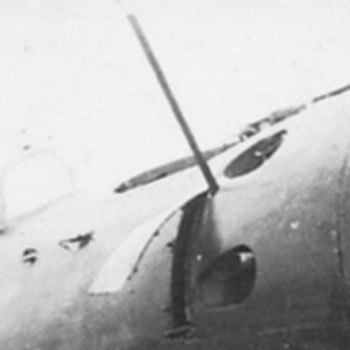
Left:
the rear part of the side of the cowling was a separate piece to make easier the loading of the synchronized ShKAS; this characteristic was introduced on late Type 10 and Type 17, and preserved in all following versions. One can see the hole for the radio mast, not installed.
Note the strange flap inside the slot of the upper exhaust pipe; it should be an optional plug-in closure to prevent snow from entering into the engine vane, probably mispositioned.
Right:
a cowling with the radio mast installed. The hole in the cowling remained visible around the mast base even when it was installed.
Photos from the web
Late production Type 29
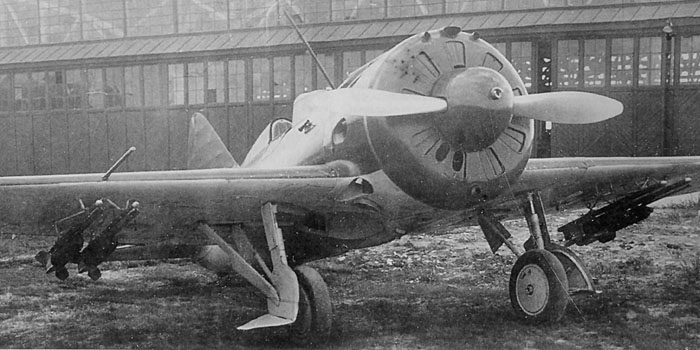
The late production Type 29 had some modification on the cowling: in first place, the protruding side air intake of the oil cooler was replaced by an elliptical hole in the front of the cowling. The hole was replicated on the shutter plate to let the air flow, so when the shutter was in closed position we see two holes, one on the cowling and one on the shutter. It is likely that the intermediate position was forbidden because it obstacled the air flow to the cooler.
The lower part of the cowling had some change:
- the oil cooler outlet was closer to the side, and with different shape;
- the small drop-like fairing in front of it disappeared.
The plane in the photo shows four experimental rocket rails for RS-132, but standard late Type 29 had the usual 6 rails for RS-82.
Images from
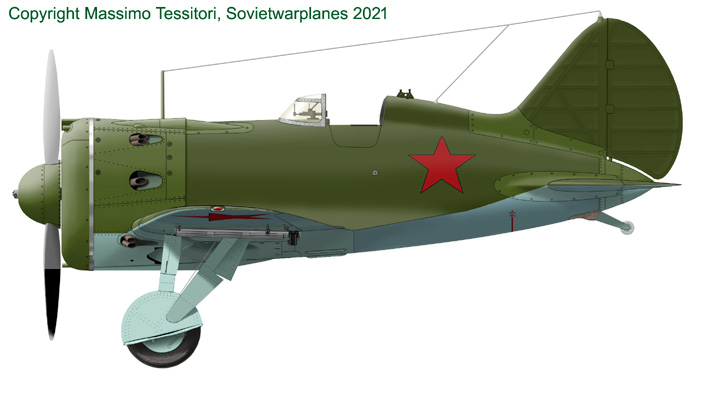
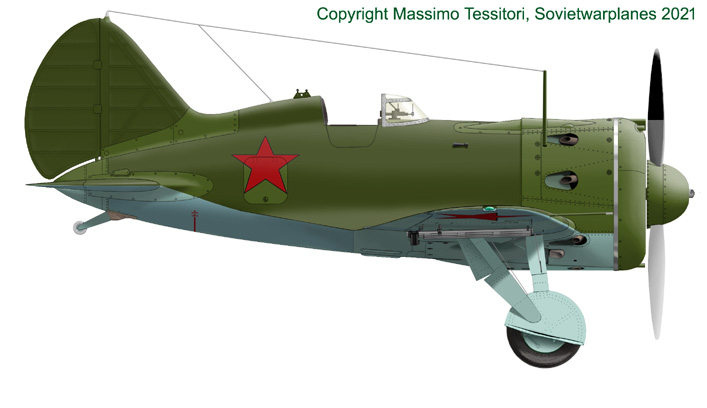
The left view don't show known differences while compared to the early Type 29
The right view shows the absence of the trapezoidal intake and some change to the outlet that was a bit moved aside, and some simplifications of the cowling under the cooler, with the disappearance of a small drop-like protrusion.
Below: bottom view of late production Type 29. When compared to the standard model, we see
- lack of the protruding inlet of the oil cooler;
- different outlet and slot on the right side;
- lack of the small drop-like fairing and of the small square hatch in front of it.
In absence of contrary proof, the slot on the left side was drawn as on early Type 29.
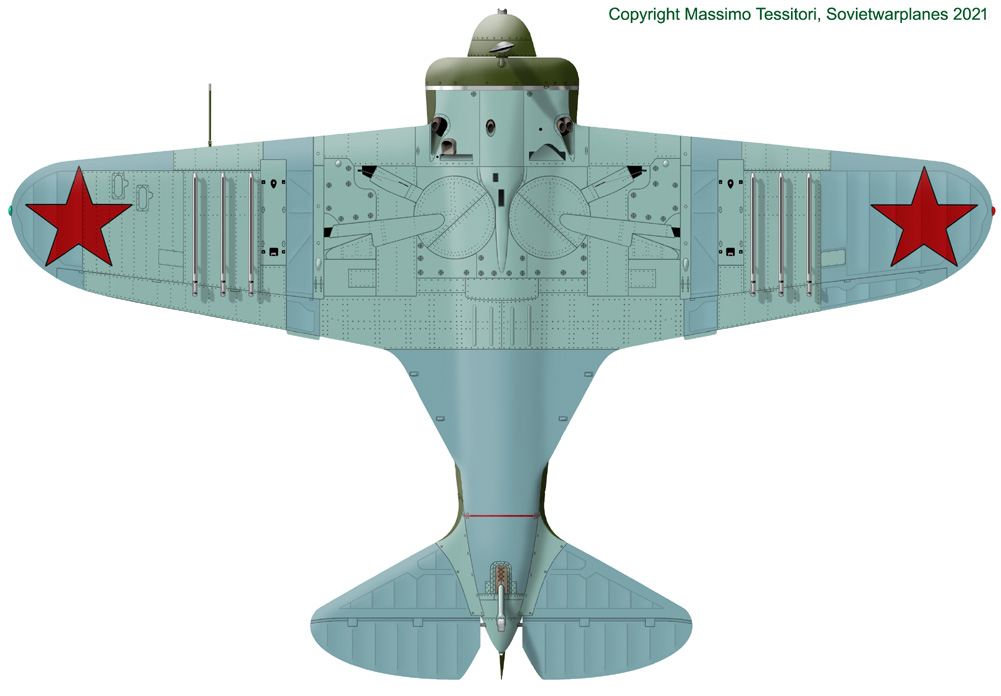
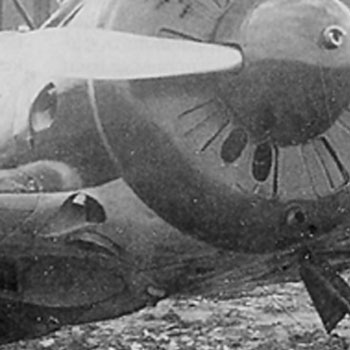
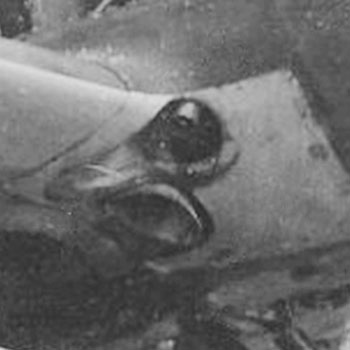
Left:
close-up of the outlet for the oil cooler and for the exhaust pipe. The new shape is difficult to describe: it seems that its cut was not planar, anyway the front looks curved and the rear flat as on the previous version. Besides it seems moved a bit forward and sideways respect to the original configuration.
These photos confirm the disappearing of the small drop-like fairing and of the small square hatch in front of it.
Photos from the web
General photos of I-16 Type 29
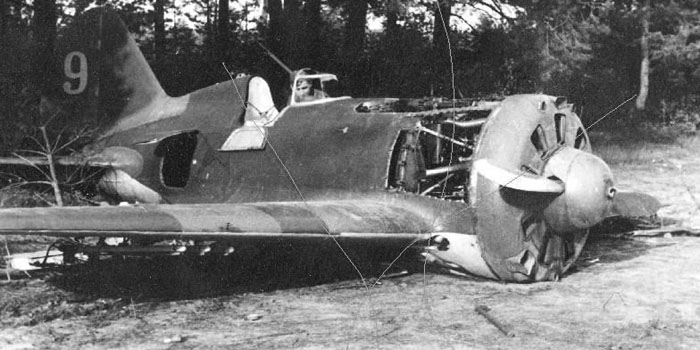
Standard Type 29 White (?) 9 captured and inspectioned by German soldiers.
The difference in shades of green between metallic and fabric-skinned surfaces is noteworthy and common to other types; it became more and more evident with the ageing of the planes.
The extension of the metal plates of the rockets area to the upper surfaces of the leading edge is put into evidence by the change of the shade of green, that sometimes appeared lighter on metallic surfaces.
The leather parts of the seat and side door have been removed.
Photo from the web
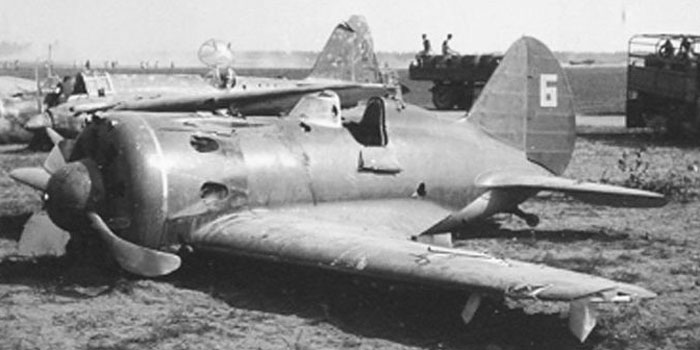
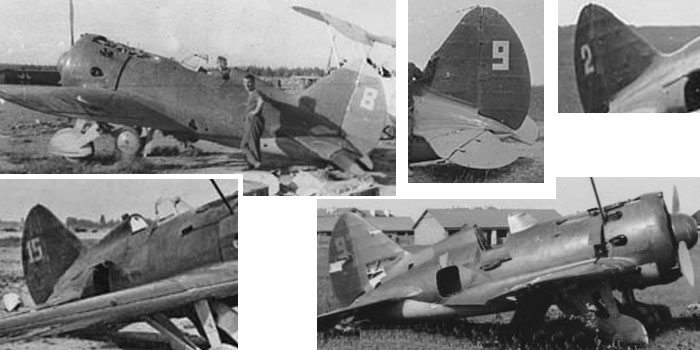
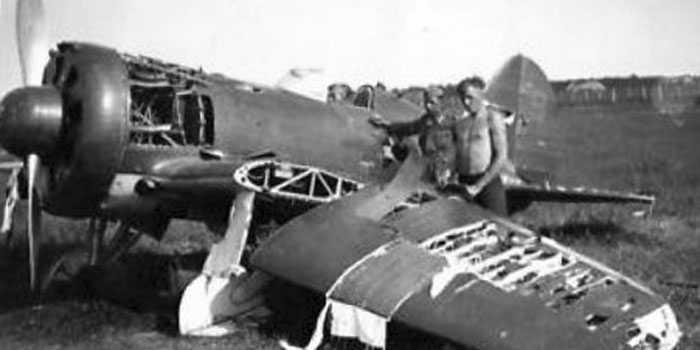
Collection of photos of I-16 Type 29 of 161 IAP crashed or damaged in the airport of Zubovo, Baranovichi or Pukhovichi on June 1941.
All the observed I-16s of the squadron are early Type Type 29, forthemost with the radio mast, side air intake, standard AII green/AII light blue livery. Known serials are in the range from 2921332 to 2921487.
The numbers on the rudder are noteworthy for their standardized and angular fonts. Each squadron had its own numeration from one to 15 (at least, this is the higher number observed on photos).
The numbers differed according to the squadron:
squadron 1: red numbers
squadron 2: light blue
squadron 3: yellow
squadron 4: white numbers.
Plane blue 8, (below left) is the only one known to have had a light blue cap on its tail.
Images and informations: M-Hobby 12/2018, article of M.Timin.
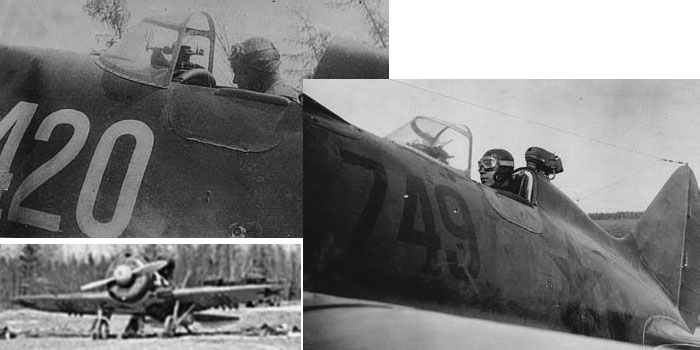
Two photos of Type 29 characterized by three digits number on the nose sides.
White 420 flown by Lieutenant V. Galkin of 155 IAP; the number 420 is from the last digits of the factory number 2921420.
Red 749 was flown by second Lieutenant Kosterov of 156 IAP; the number 749 is taken from the serial 2921749.
Apart for the well visible red star on the fuselage, another one seems vaguely visible on the tail.
The small image shows the front of an old Type 29 (with side intake) of 156 IAP. Note the white spinner front and the rocket rails. Not all the known planes of the regiment had red numbers, and not white fronts; the color could be related to the squadron.
Images and informations from M-Hobby 12-2018, article of N.Timin.
Something about the units can be found at: http://ava.org.ru/iap/3g.htm
and http://ava.org.ru/iap/156.htm
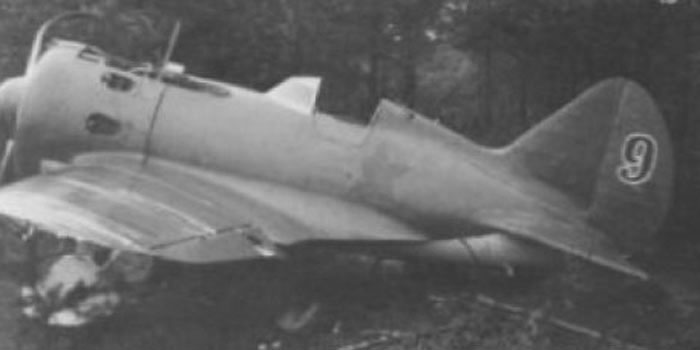
Black 9 of 163 IAP, Belarus, during Barbarossa.
Photo from the web
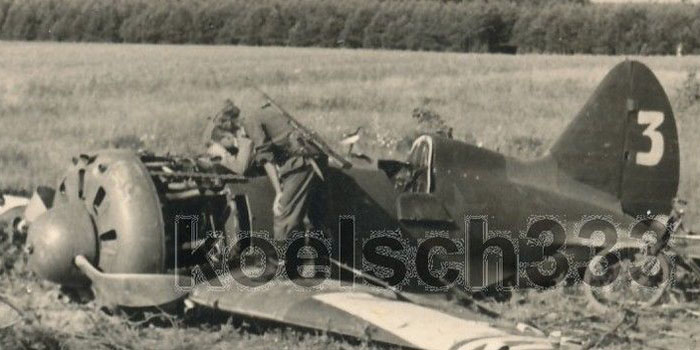
Plane 3 (white?) after a forced landing. It probably belongs to 32 IAP.
Photo from the web
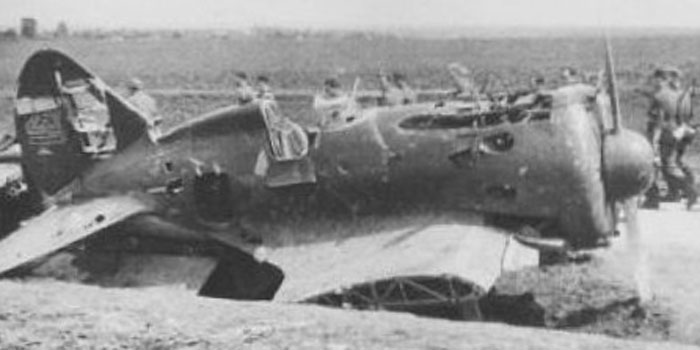
Plane underlined 23 (red with white outline?).
Photo from the web
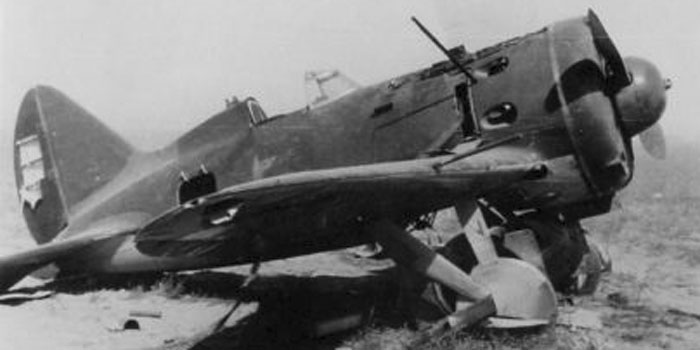
Standard Type 29 captured by Germans during Barbarossa, probaby the same plane of another photo at the beginning of the page. .
Photo from the web
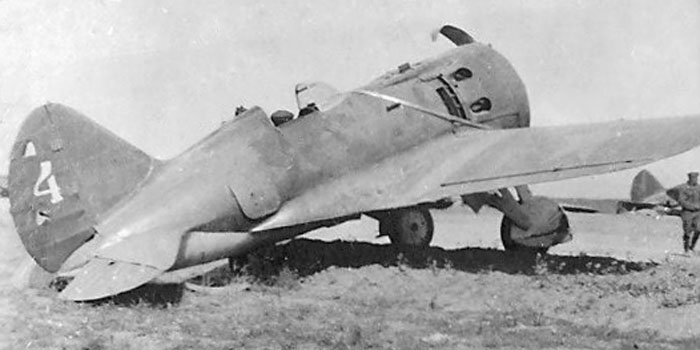

Two images of White 4, a late production Type 29 recognizable for the lack of the side air intake for the oil cooler.
Note the bent blades, the removal of the gunsight and the lack of rocket rails. and of extractable torches. The position of the red stars under the wings confirms the lack of the torches, that required that the lower stars were moved closer to the wingtips.
Images from Scalemodels.ru
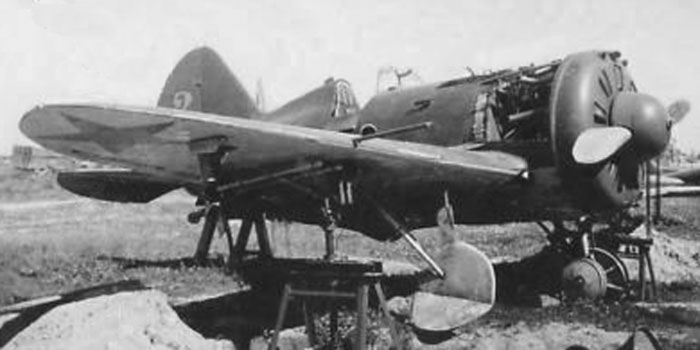
Yellow (?) 2 was another late production Type 29, recognizable for the lack of the cooler inlet, replaced by an oval hole on the front at 7 o'clock.
Photo from the web
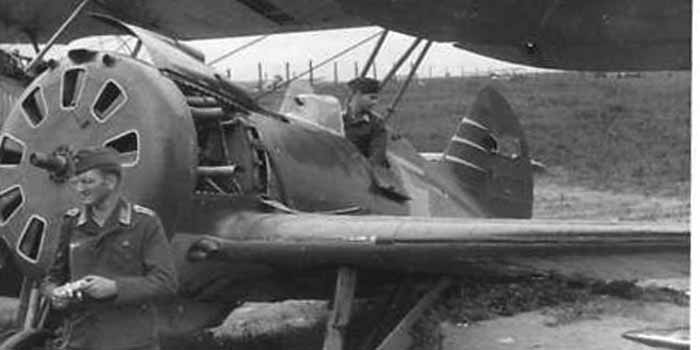
This early Type 29 captured by Germans was characterized by white fillets on the cooling louvers and on the fin. Perhaps it was the personal mount of some unit commander. A small number or some unrecognizable emblem seems painted on the rudder.
Photo from the web
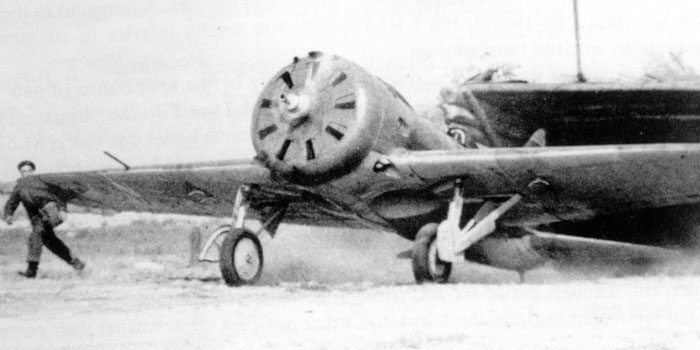
An operative early Type 29 .
Unusually, this plane hadn't rocket rails but bomb racks instead, installed on the auxiliary tanks plate. The metal reinforced skinning on the wings is still there.
Note the removal of the spinner and of the wheel foldable covers, and the painted cap on the fin.
Photo from Istrebitel I-16 of Maslov
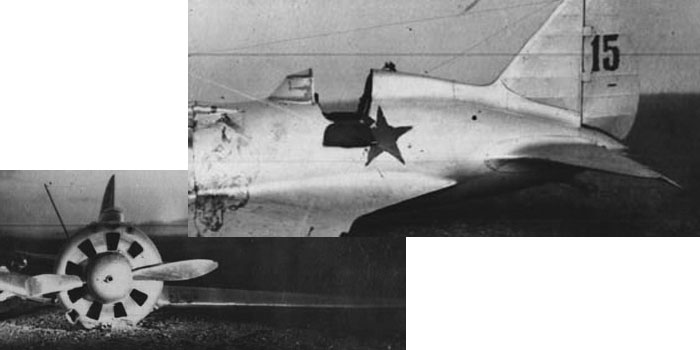
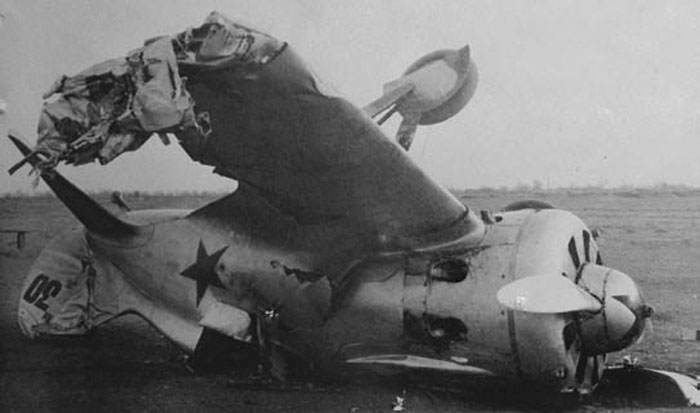
Planes red 15 and 30 of 167 IAP suffered for accidents in autumn 1941.
The silver repainted uppersurfaces are noteworthy. The lower part preserved the original AII light blue.
The numbers, as the red stars in prewar position and the noteworthy red star on the spinner of n.30, seem to have a thin black outline.
Images from M-Hobby 11-2018, article of M.Timin.
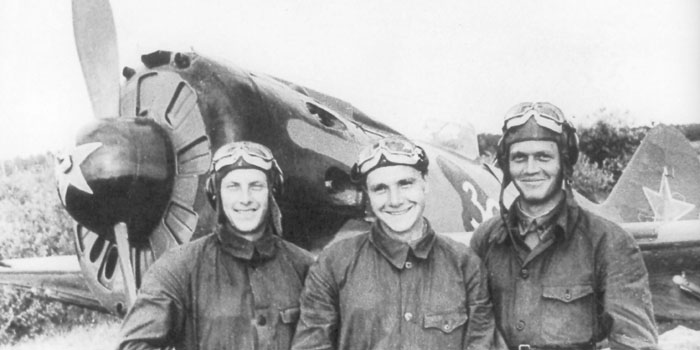
Sergeants Siesarchuk, Gozin and Perevera pose in front of a late Type 29 of the Moscow PVO in 1942.
The plane is noteworthy for its contrasted black-green camo, for the white-outlined red star on the spinner and the tail and for the slogan 'Za rodinu!' (?) on the fuselage side.
Photo from Istrebitel I-16 of Maslov
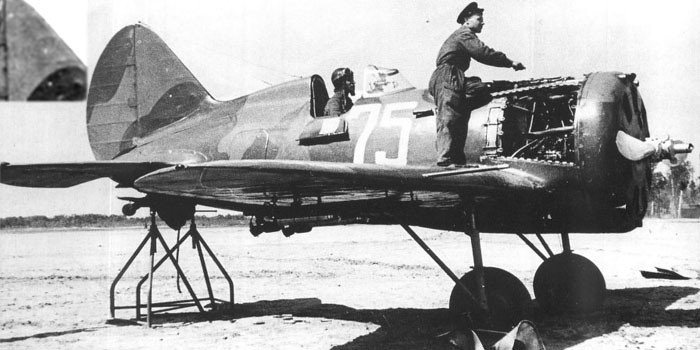
The Type 29 White 75 of sgt.V.P. Segalayev of the 71 IAP of the Baltic Fleet.
Note 4 (instead of 6) rocket rails under the wings and the absence of the landing gear doors and of the spinner.
The balance horns on the hub are visible, just as on previous versions with the MV-1 propeller and longer blades.
The camouflage looks very similar to the general use NKAP template of June 1941.
Note the large star on the fuselage side; a smaller one looks barely visible on the fin.
The font and position of the numbers was common to many I-16s used as assault planes in 1942, including older versions, and is probably due to some maintenance facility.
Image from Red Stars of Geust, Keskinen, Stenman
http://ava.org.ru/iap/10gm.htm
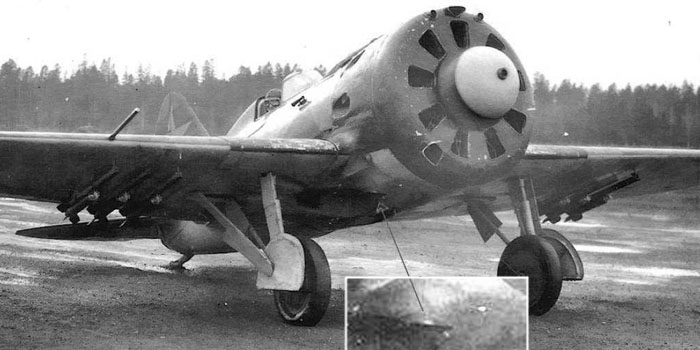
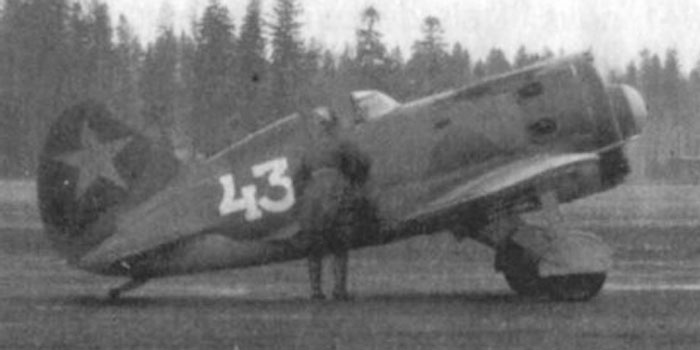
These photos of White 43 of 286 IAP show the wartime camouflage and markings. The light front of the spinner is noteworthy.
The outlet of the oil cooler visible on the photo seems in an unusual position. It's unclear if this is due to some modification of the plane or to an artifact in the restoration of the photo.

Late type I-16 Type 29 White 13 of Pyotr Timofeevich Kharitonov of 158 IAP, Leningrad front.
The plane was armed with rockets and showed a strongly contrasted black-green camouflage.
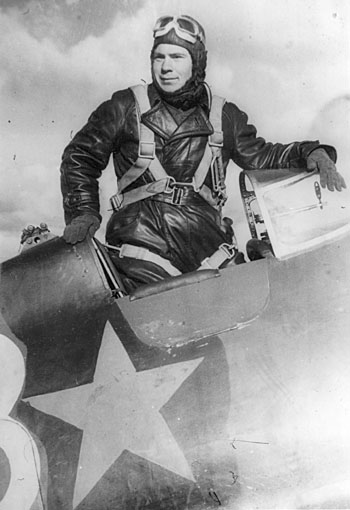
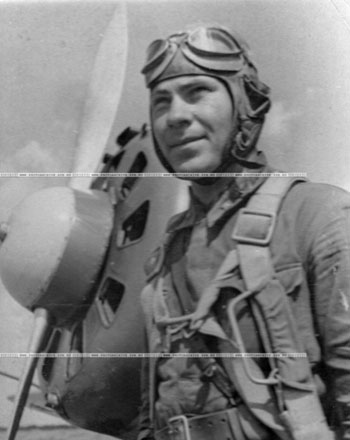
Left: Kharitonov in the cockpit of plane n.13 of the photo above.
The black bands were made after having painted the white numbers on the fuselage and avoid them.
Left: Kharitov posing close to an I-16 of the same unit, probably not the same of the previous photos because it doesn't seem to have a black-painted nose. The front of the spinners was white, a very common recognition mark in the Leningrad area.
The image allows to see an oval vent partially hidden from the prop blade.

Sgt. Manohin of 286 IAP in the cockpit of his I-16 numbered 29, presumably Type 29.
On the tail, we read a small red 129 of uncertain interpretation.
The strong difference between the shades of green between wooden and metallic parts suggest that the green layer is the original factory one supplemented with black areas.
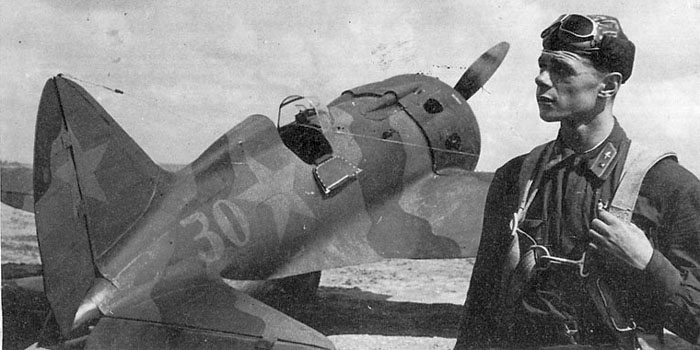
Junior lieutenant Ivan Bratushko of 286 IAP next to the I-16 fighter Red 30, on 10 July 1942.
The plane could be a Type 29 as other known ones of the same unit, but this is not sure because the cut on the rear of the top engine cowling panel is not visible, so a Type 24 look possible.
The wire aerial was unusual: it went from the fin to the fuselage and to the right wing tip.
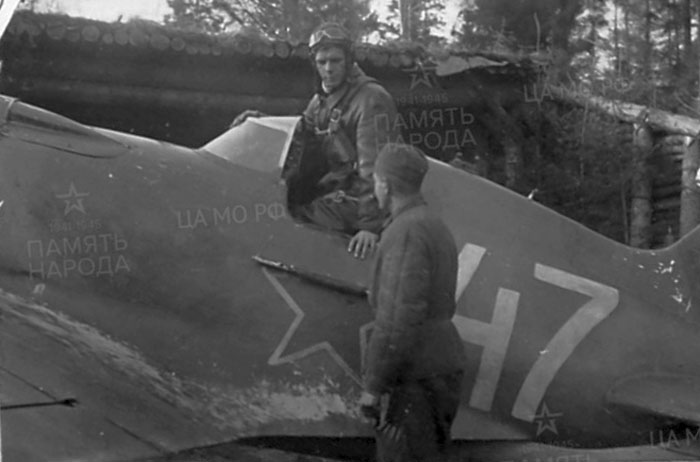

The ace Ivan Kirillovich Bratushkoof 286 IAP in the cockpit of his I-16 Type 29 White 47.
The plane is identifiable as Type 29 because of the fairing of the UB under the fuselage, and has underwing rockets.
The plane was noteworthy for its low contrast camouflage (two greens with different hue? Green and brown?) and for the white outline around the red stars on the fuselage and tail (but not under the wings). It is likely that its spinner was painted with a white front as other planes of the same unit.
Note the aerial wires from the fin to the fuselage and probably the wing.
The lower frame of the windshield was unusually painted green.
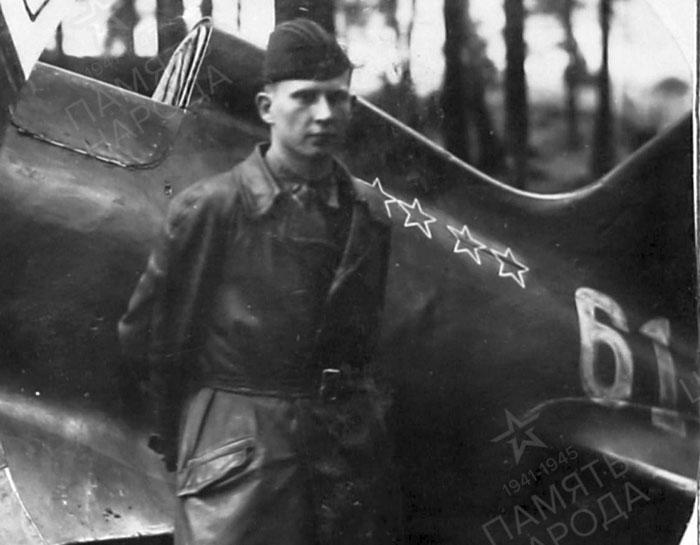
Cap. Tatarchuk, commander of squadron 1of 286 IAP.
The I-16 White 61 presumably was a Type 29 and had a white spinner front as the other known planes of the same unit.
Apart for the unusual position of the number, the plane was noteworthy for the victory stars: at least four white contoured ones, plus at least two, probably four, plan red starlets in the row above.
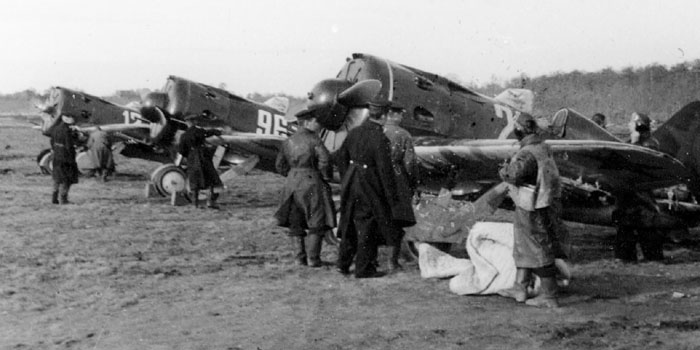
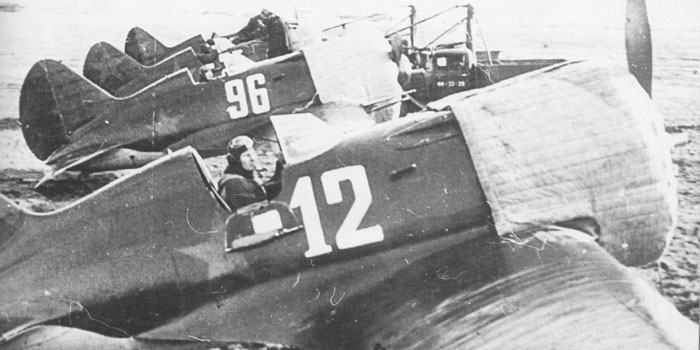
Planes of 4 GvIAP KBF in October 1942.
Plane 12 was a Type 29 without spinner, unclear if early or late type; plane 96 was a Type 27; the other plane, 25, was a late Type 29.
All three planes preserved the uniform green uppersurfaces, but the stars on the fuselage and eventually on the tail change from plane to plane.
Photos from Istrebitel I-16 of Maslov and from Red stars of Geust, Keskinen, Stenman
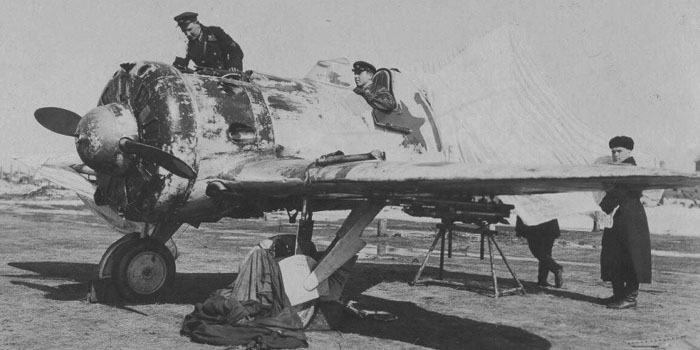
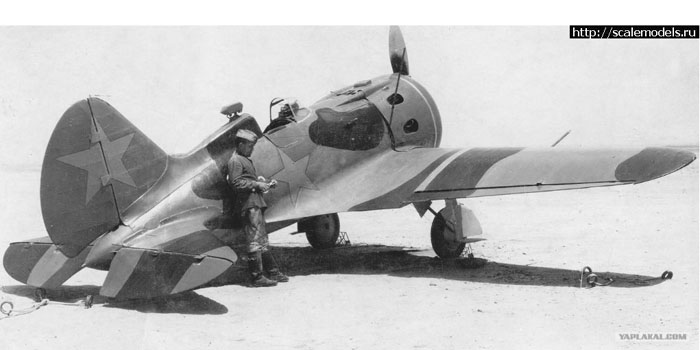
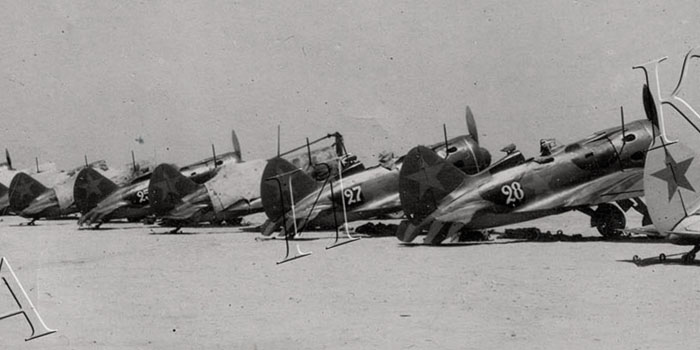
I-16 late Type 29 with a non-standard camouflage, apparently with 3 shades, in 1943.
It could be that this was made in spring 1941, according to the new directives that were scarcely applied and then made obsolete by the more known directive of June 1941.
The shades can be guessed as AMT-4 dark green, AMT-6 black and AMT-1 light brown or similar AII shades.
Unfortunately the pilot is hidding the number on the fuselage. 16 or 26 can be guessed.
The photo below shows a whole line of similar planes. The accurate repetition of the pattern on all visible planes is noteworthy.
The silver one on the right is a UTI-4.
Photos from Zaika archive and Yaplakal
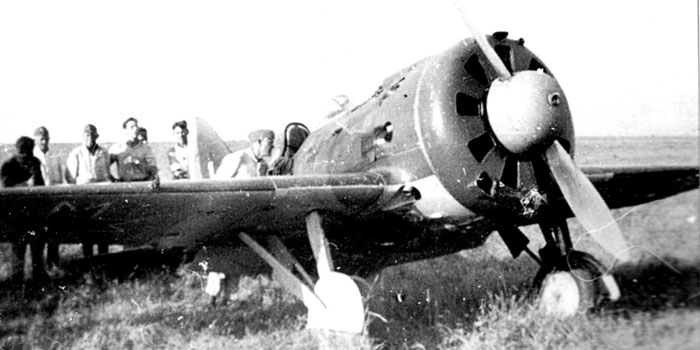
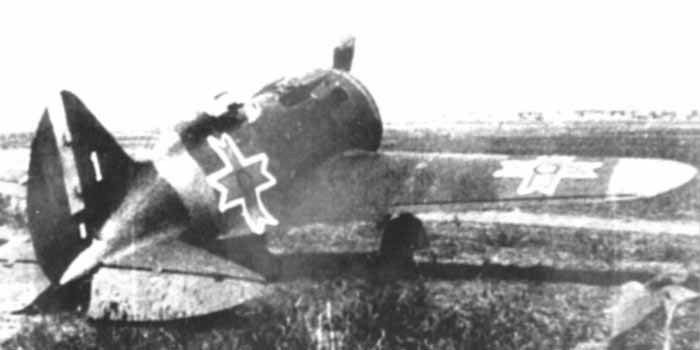
A Soviet pilot defected to Rumania in July 1941, just before the war's outbreak. He landed in a field near the town of Dorohoi in Moldavia.
The plane was transported to Botosami where the Escadrila 19 Observatie was based. The fairing of the right ShKAS was lost during the move.
The plane was flown by cap.Ciocanel Popescu, that praised its maneuverability.
The plane was marked with Rumanian crosses and evident yellow bands, equipped with a radio and utilized in simulated aerial combats to train the crews of IAR-39.
In early September 1941, the plane had to be transferred to Gropul Vinatoare equipped with IAR-80 for further simulated combat training, but it was seriously damaged during the landing at Iasi airfield on 11 September because of a landing gear failure, and consequently scrapped.
Photos from Polikarpov I-16 in action, Squadron Signal. and Istrebitel I-16 of Maslov.